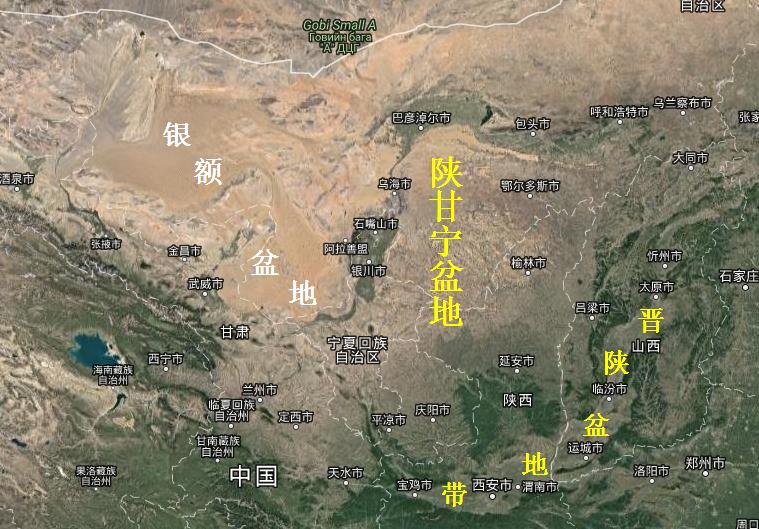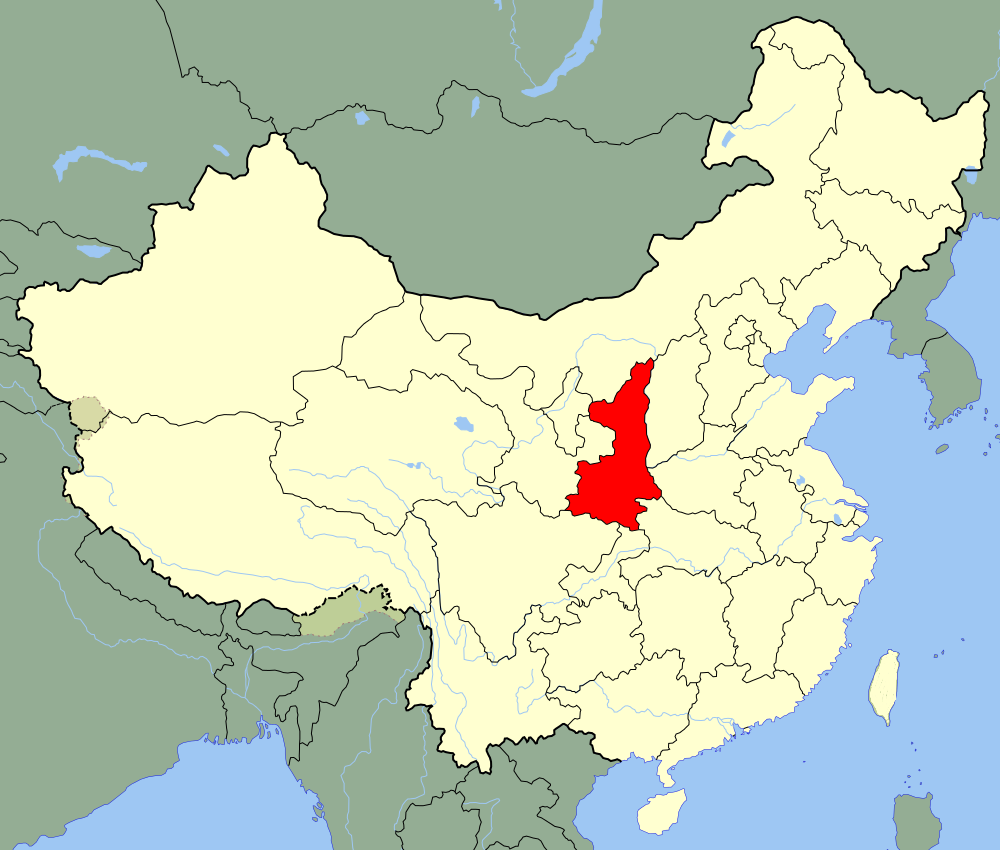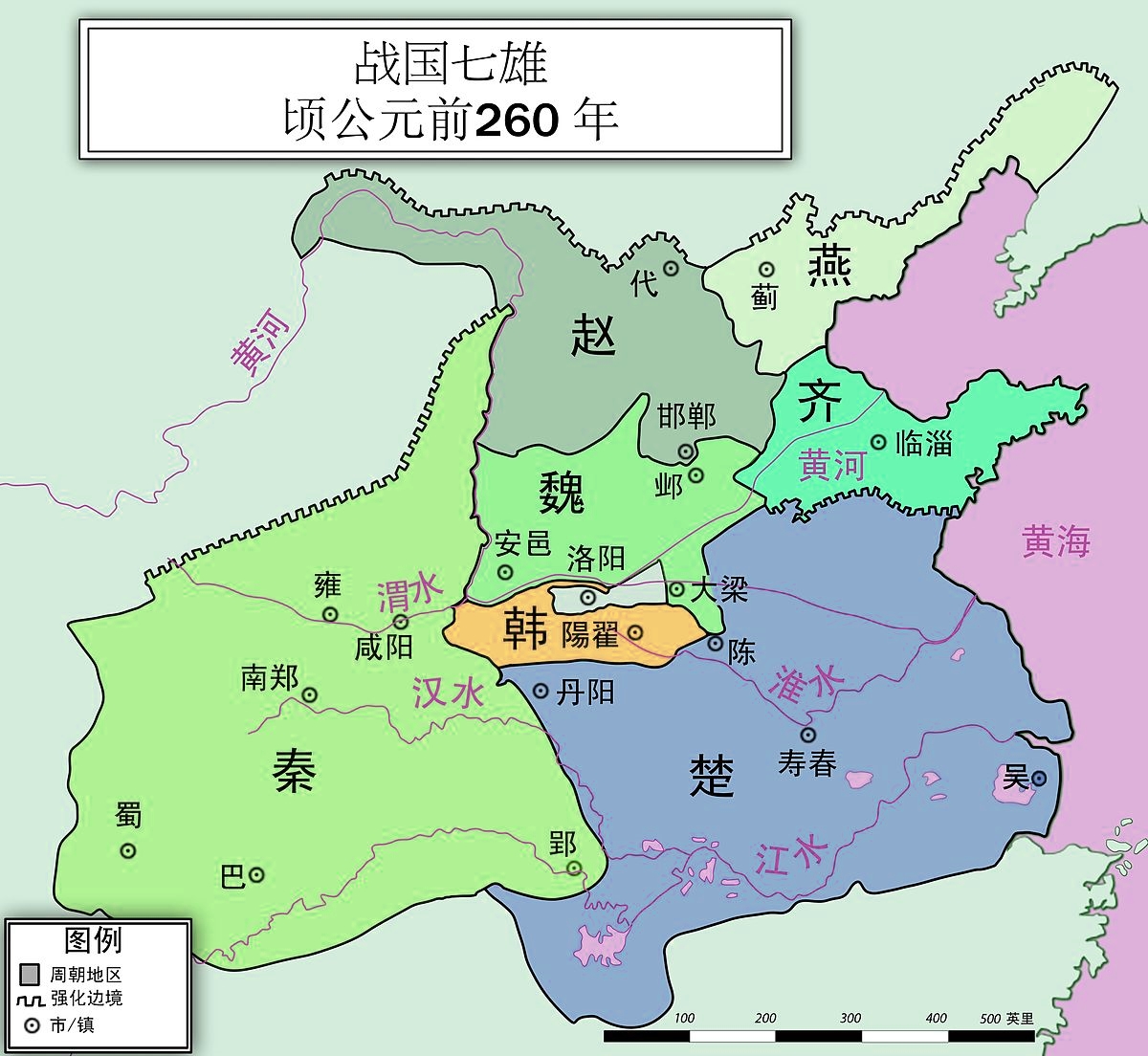
Deutsch-Chinesische Enzyklopädie, 德汉百科
 Shaanxi Sheng-SN
Shaanxi Sheng-SN
 *Yellow river
*Yellow river
 Gansu Sheng-GS
Gansu Sheng-GS
 Nei Mongol Zizhiqu-NM
Nei Mongol Zizhiqu-NM
 Ningxia Huizu Zizhiqu-NX
Ningxia Huizu Zizhiqu-NX
 Shaanxi Sheng-SN
Shaanxi Sheng-SN
 Shanxi Sheng-SX
Shanxi Sheng-SX



大明宫是唐长安城“三大内”(太极宫、大明宫、兴庆宫)中最为辉煌壮丽的建筑群,地处长安城北部的龙首原上,主要有含元殿、麟德殿、三清殿、清思殿、宣政殿和紫宸殿等宫殿遗址。大明宫国家遗址公园规划范围南至自强路,北至重玄路及玄武路,东至太华南路,西至建强路,总占地约3.84平方千米,公园基本还原了唐代大明宫的历史原貌,并在文物保护基础上,体现了旅游的元素。大明宫国家遗址公园延续唐代大明宫的历史格局,由南向北沿丹凤门—含元殿—宣政殿—紫宸殿—玄武门—重玄门,为中轴线,分为殿前区、宫殿区、宫苑区三大区域。大明宫国家遗址公园是西安市最大的城市中央公园,形成六大亮点和十个典型游览景点。大明宫国家遗址公园是西安城市建设、大遗址保护和改善民生的重点工程,西安的“城市中央公园”。
2014年6月22日,包括大明宫国家遗址公园在内的“丝绸之路:长安—天山廊道的路网”入选世界遗产名录





Das Qianling-Mausoleum (乾陵, Qiánlíng) bzw. Qiangling-Mausoleum der Tang-Dynastie (唐乾陵, Táng Qiánlíng) ist die Grabanlage des dritten Tang-Kaisers Gaozong (reg. 650-683) und seiner Gemahlin, der späteren Kaiserin Wu Zetian (reg. 684–704), im Kreis Qian in der chinesischen Provinz Shaanxi. Die Verstorbenen wurden hier im Jahr 684 bzw. 706 beigesetzt.


秦国是春秋战国时期诸侯国,嬴姓,赵氏[1][2]。史记秦本纪主要根据为秦人所自述历史。据被盗掘后抢救回来的清华简《系年》的第三章所载,周初三监之乱平定后,蜚廉“东逃于商奄氏。成王伐商奄,杀蜚廉,西迁商奄之民于邾,以御奴之戎,是秦先人”[3][4]。清华简本身为海外黑市购买,相对现场出土文物其真实性先天不足,受部分学术界人士质疑,如姜广辉在《光明日报》的质疑、房德邻在《中国文化报》指出简文使用了先秦不可能产生的双音词“瘇胀”。熊铁基认为秦人伪造家谱,丁山在《中国古代宗教与神话考》一书中则说夏、商、周、秦“四代开国前世系皆宗祝伪托”;金景芳认为“《史记三代世表》明确地谱列尧、舜和夏、殷、周王室的祖先同是以黄帝为初祖。虽然在细节上不能保证没有缺漏和讹误,但大体上说是有根据的,可信的。”雍际春、王宏谋说秦部落祖先是伯益,祝军指出秦部落是少昊的后裔,柳明瑞认为嬴秦氏族起源于今山东地区[5]。据史记秦本纪,西周周孝王因秦祖先非子善养马,因此将其封于秦,作为周朝分封国。前770年,秦襄公护送周平王东迁有功,获封为诸侯,为伯爵地位,秦正式成为一方诸侯国。周朝给其封地在今甘肃河东地区到陕西一带。从前677年起,秦国在雍(今甘肃天水到陇南一带)建都近300年。雍城遗址有宫殿区、居住区、士大夫与国人墓葬区和秦公陵园。
秦国与西戎、义渠之间有通婚、结盟的关系,秦国崛起后,这些势力皆被并入秦国。战国时期,秦孝公[6]实施商鞅变法,为秦灭六国奠定基础。秦王嬴政在前221年,统一诸夏,秦始皇使秦国成为中国历史上第一个大一统中央集权君主制帝国,秦帝国较西方的罗马帝国还要早两百年。
Qin (Chinese: 秦; Wade–Giles: Ch'in; Old Chinese: *[dz]i[n]) was an ancient Chinese state during the Zhou dynasty. Traditionally dated to 897 B.C.,[1] it took its origin in a reconquest of western lands previously lost to the Rong; its position at the western edge of Chinese civilization permitted expansion and development that was unavailable to its rivals in the North China Plain. Following extensive "Legalist" reform in the 3rd century BC, Qin emerged as one of the dominant powers of the Seven Warring States and unified China in 221 BC under Shi Huangdi. The empire it established was short-lived but greatly influential on later Chinese history.
Though disliked by many Confucians of its time for "dangerously lacking in Confucian scholars," Confucian Xun Kuang wrote of the later Qin that "its topographical features are inherently advantageous," and that its "'manifold natural resources gave it remarkable inherent strength. Its people were unspoiled and exceedingly deferential; its officers unfailingly respectful, earnest, reverential, loyal, and trustworthy; and its high officials public-spirited, intelligent, and assiduous in the execution of the duties of their position. Its courts and bureaus functioned without delays and with such smoothness that it was as if there were no government at all."[2]
L'État de Qin ou Ts'in (EFEO) (秦) (v. 771 av. J.-C. - 207 av. J.-C.) apparaît au début de la dynastie des Zhou Orientaux, dans la vallée de la Wei (actuelle province du Shaanxi). État semi-barbare aux confins occidentaux de la Chine des Zhou, son influence s'accroît au cours de la période des Printemps et des Automnes et surtout des Royaumes combattants, à la fin de laquelle le roi de Qin, ayant annexé ses six principaux rivaux (Qi, Chu, Han, Yan, Zhao, et Wei) fonde la dynastie Qin (221 av. J.-C.-207 av. J.-C.). La famille régnante du Qin portait le nom de Ying (嬴).
Qin o Ch'in (Wade-Giles) (秦), (778 a.C.-207 a.C.) fu uno Stato cinese del Periodo delle primavere e degli autunni e del Periodo dei regni combattenti. Il nome cinese per i suoi regnanti era Ying (嬴).
El estado Qin (en chino: 秦國, Wade-Giles: Ch'in2 kuo2, pinyin: Qín guó) era un estado en el noroeste de China que se extendió durante el periodo de Primaveras y Otoños y los Reinos Combatientes de la historia antigua. Surgió como una de las superpotencias dominantes de los siete estados combatientes por el siglo III a. C. y, finalmente unificó a China bajo su mandato en el año 221 a. C., después de lo cual se le conoció como la Dinastía Qin.
Цинь (кит. 秦) — царство в древнем Китае, которое сначала было удельным княжеством, а потом смогло объединить Китай (см. «Цинь (династия)»). Существовало от 778 до н. э. по 221 до н. э. в эпоху формального правления династии Чжоу в периоды Весны и Осени и Сражающихся царств до образования Империи Цинь. Правящая семья носила фамилию Ин (кит. 嬴).


 Geography
Geography
 Architecture
Architecture




 Military, defense and equipment
Military, defense and equipment
 History
History
 Religion
Religion